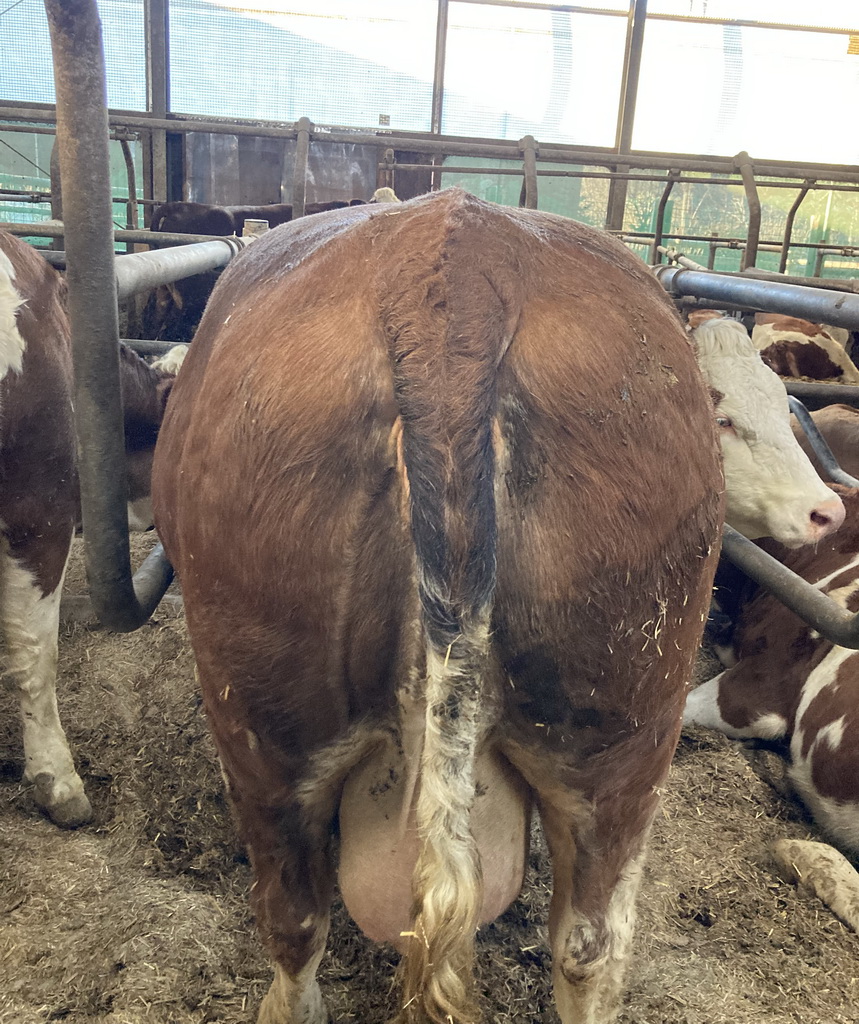The fertility of dairy cows plays a central role in modern dairy farming. A very interesting concept on this topic is the so-called „High Fertility Cycle“. This model describes specific measures that can significantly improve fertility and herd health.
The animals should become pregnant early
Contrary to the trend towards extended inter-calving periods, the basic concept of the „High Fertility Cycle“ is to keep the inter-calving period as short as possible. In order to explain this conclusively, we have to start with over-conditioned dry cows. Cows that are too fat are without doubt absolute risk animals for any metabolic diseases such as ketosis, milk fever or postpartum behavior. The problem with these over-conditioned animals is that they tend to lose too much condition after calving. In the course of a strong mobilization of body fat, the energy metabolism or the liver is overstressed. In addition to the health risks already mentioned, fertility also suffers significantly.
Verfettete Trockensteher sind Risikotiere!
For this reason, the consequences of fatty animals are now viewed even more critically in the USA. The general recommendation of body condition score (BCS) at calving has therefore been revised downwards. The idea is that a lower loss of body condition after birth reduces the metabolic stress on the animals, which subsequently leads to healthier animals (lower ketosis values, less postpartum behavior, etc.), as already mentioned. These „healthier“ animals have been shown to have better fertility rates. Based on this finding, it is clear that avoiding animals that are too fat is of enormous importance. A „key factor“ in addition to ration design is the timing of successful mating. If the animals are mated as early as possible, the cows tend to have a higher milk yield at the time of drying off. High milk yields in the old milkers are the simplest and most efficient measure to prevent the animals from becoming fat.
If, on the other hand, the animals become pregnant too late, even a perfect ration design and high genetic persistence cannot withstand the fatty degeneration of the animal. At this point, it must of course be mentioned that the individual feeding system also plays a role. A cow with 20 liters of milk naturally has a higher risk when fed with full TMR than when the concentrates are fed by transponder. Nevertheless, it must be said that fatty animals can also occur with transponder feeding.
Increase persistence through targeted feeding
In addition to good fertility, feeding also has a considerable influence on the condition of the animals. It is a paradox, but more energy in the ration can actually lead to a reduced proportion of fatty animals. Especially when the use of high-quality forage and concentrates reduces the stress caused by ketosis, the animals tend to be better able to maintain their milk yield. This metabolic disease can be detected very easily by measuring the BHB (beta-hydroxy-butyrate) levels in the blood of the affected animals using a rapid test. Only individual animals should have values above 1.2 mmol. In this context, it should also be mentioned that the continuous supplementation of a liquid feed (propylene glycol) up to the 60th day of lactation has proven to be a very efficient ketosis prophylaxis. Another decisive factor is the continuity of the ration. Old milkers in particular lose too much milk yield during acute feed changes. In most cases, such animals do not return to the same milk yield level. Nevertheless, it will happen on every farm that individual animals lose too much milk yield. The body condition of such cows must be critically monitored. If the concentrate is fed via a transponder or a milking robot, reducing the amount of concentrate before the 200th day of lactation is usually counterproductive. Although reducing the amount of performance feed leads to a reduced energy supply in the short term and therefore to a reduced build-up of body fat, the reduction in concentrates is usually accompanied by a further drop in milk yield. And as I have already mentioned, the best remedy against excessive body fat build-up is adequate milk yield. From the 200th day of lactation, all concentrates should of course be adapted to the milk yield. In the case of AGR or TMR feeding, animals that are already fatty should be dried off early to prevent further increases in body condition.
(Excerpt from the article „Fertility – The High Fertility Cycle“ by Jonas Schiffer, independent feeding consultant; Tel. 0664 34 13 068 | www.isuba.at; Fleckvieh Austria Magazin 1/25)






